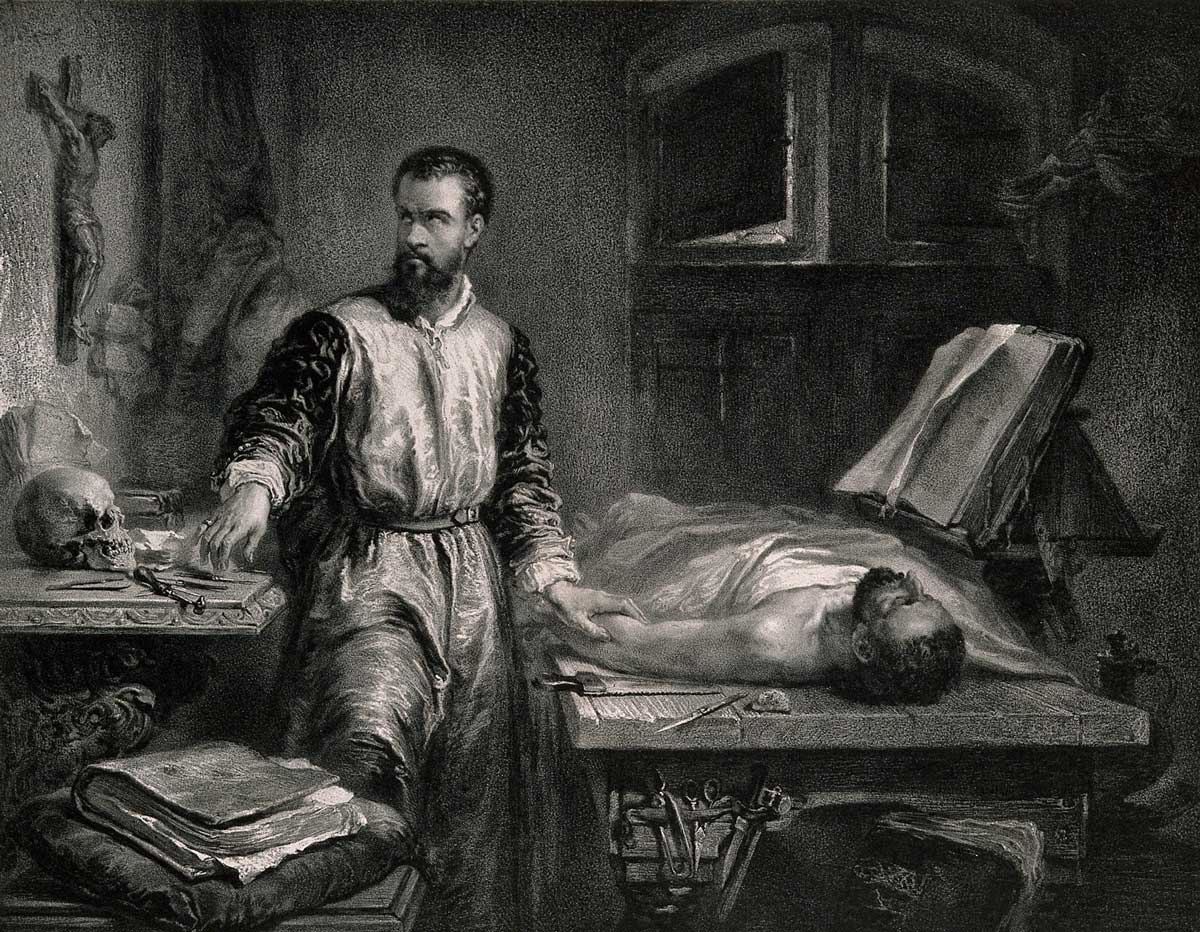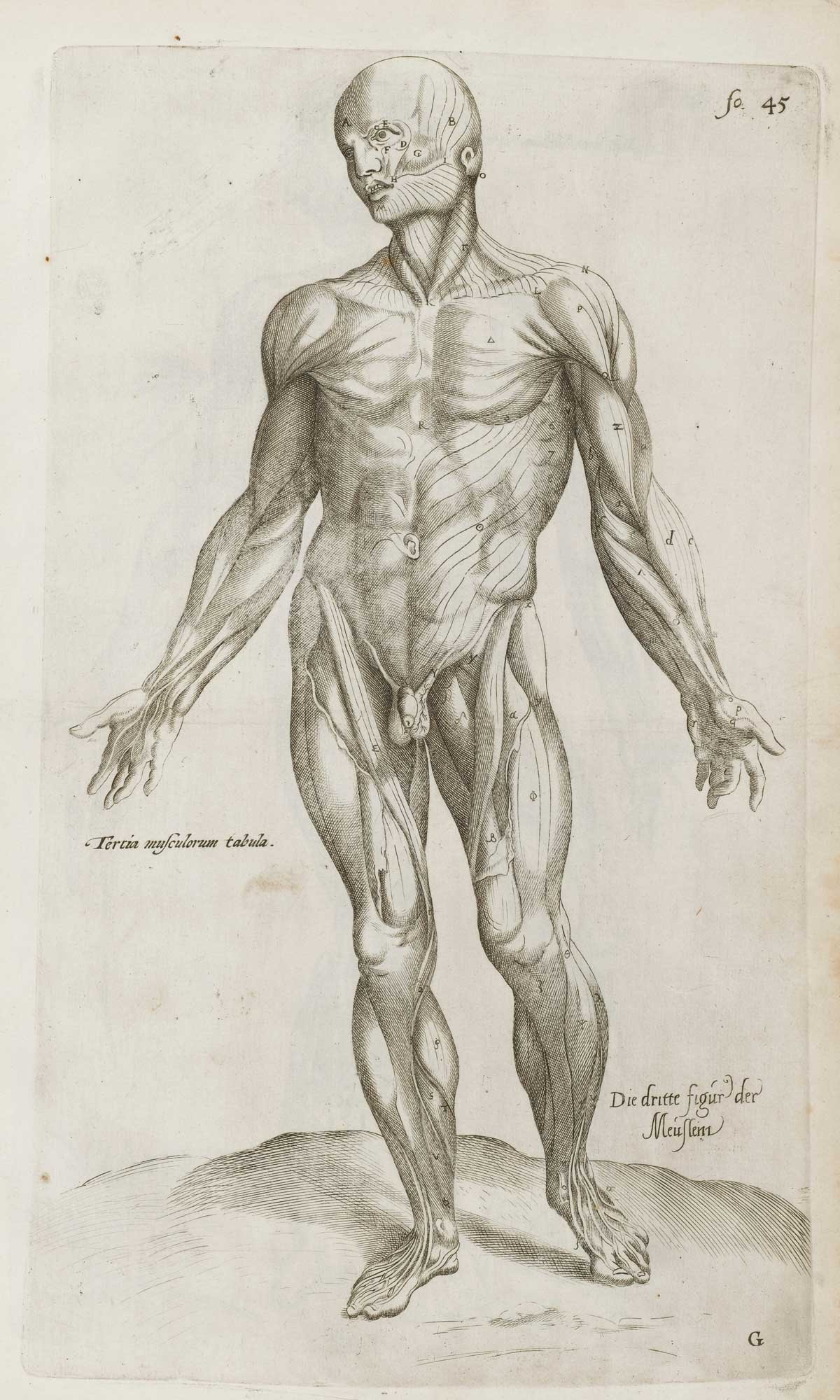Andreas Vesalius born in Brussels
The Renaissance scientist, known for ‘De Humanis Corporis Fabrica Libri Septem’ was born on 31 December 1514.

The great Renaissance scientist is regarded as the founder of the modern study of human anatomy. His name in Flemish was Andries Van Wesel. The Brussels in which he grew up and went to school, in the former duchy of Brabant, was ruled by the Spanish Habsburgs and his father was pharmacist, or drug specialist, to the Emperor Charles V. At 15, in 1529 he was sent to the University of Louvain and at 19 in 1533 he went to the medical school at the University of Paris, where he studied human bones from cemeteries and dissected some human bodies. He went back to Louvain in 1536 and then in the following year to Italy and the University of Padua, which had a tradition of encouraging freedom of thought and experiment. Copernicus had studied there and later Galileo was professor of mathematics. William Harvey, discoverer of the circulation of the blood, was one of its graduates in medicine.
Vesalius made such an impression in Padua that the day after receiving his doctorate in medicine he was appointed to lecture on surgery and anatomy. He dissected human cadavers and created anatomical charts of the human body to help his students. The parts of the body were labelled in a mixture of Greek, Latin, Arabic and Hebrew. He also published a textbook on dissection and a book on an improved method of blood-letting, then widely used in medical treatment. His appointment to the medical faculty was renewed in 1539 with a substantial increase in his salary and a note that his students held him in profound admiration. A judge in the criminal court in Padua had become so interested in Vesalius’ work that he started supplying him with bodies of executed criminals, which gave the anatomist more corpses to work on. Sometimes a prisoner’s execution was delayed to suit Vesalius’ workload.
Vesalius was coming to see that current theory was far too heavily dependent on Galen, the Greek anatomist of the second century AD, who had been physician to the Roman Emperors Marcus Aurelius and Septimius Severus. Galen had learned much from treating injured gladiators and had dissected the bodies of animals, but dissecting human bodies was forbidden in the Roman Empire. Galen was a pagan, but he believed there was only one God, which helped to make his books accepted as authoritative all through the Christian centuries in the Middle Ages.

Vesalius’ dissections convinced him that much of Galen’s teaching about human bodies had been based on dissections of monkeys and was misleading. He once remarked that very little was being currently offered to students of anatomy that could not be better taught by a butcher in his shop. In 1542 he went to Venice to oversee, probably in Titian’s studio, the preparation of drawings to illustrate what proved to be his major work, De humani corporis fabrica libri septem (‘Seven Books on the Structure of the Human Body’), which was published in 1543. The Fabrica dealt with the bones, the muscles, the nervous system, the liver and kidneys, the heart and blood vessels, the reproductive organs, the skull and the brain. After some initial doubt, it was hugely admired and frequently reprinted, as a far more accurate and comprehensive treatment of human anatomy than any previous work. He presented a copy to Charles V, who appointed him as a physician to the imperial court.
In 1544 Vesalius married Anne von Hamme, who came from a rich Brussels family and bore him a daughter. His position at Charles V’s court was a mixed blessing, involving him in wearing consultations with the emperor and other patients about boring routine ailments, but after Charles abdicated in 1555 Vesalius went to be a court physician to Philip II of Spain in Madrid. He took every opportunity he could to teach anatomy and carry out post-mortems and, serving with the imperial army, he introduced effective new surgical techniques to treat wounds. Such was his reputation that when Henry II of France was severely injured in the head in a joust in 1559 it was Vesalius who was summoned urgently to take charge, though he was not able to save the king’s life.
Vesalius decided to make a pilgrimage to the Holy Land in 1564, going by way of Venice and Cyprus. It is not clear whether he reached Palestine or not, but either on the way there or on the way back he fell so seriously ill that he was put ashore on the Greek island of Zakinthos, then under Venetian control. He died there in 1564, aged 49, and it was probably there that he was buried. There is no report of anyone attempting to dissect him.




